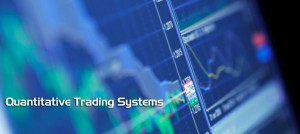Quantitative Trading – A Brilliant Tool Which You Need To Understand
Quantitative trading is like anything else in the investment world. There are risks. There are always going to be risks. The best we can do, as investors, is to manage and control those risks.
Quantitative investing models do this by gathering a collection of the sharpest investing minds available together to get them to collaborate on a model. Once the model has been developed, they test it rigorously to be sure that it performs as it should, and then they make refinements to the model so that it becomes ever more adaptive and ever more responsive. Ultimately, it is this cycle of continuous improvement that makes such models ever more successful. Even with all of that, however, those risks we mentioned remained. Here’s what you need to know about what they are.
Problems and Limitations of Quantitative Trading Models
Let’s first talk about the human factor from the human side of things. We know, of course, that having computers make all the buy and sell decisions is one of the advantages of the system. Human emotion can get in the way, and let’s face it, there’s not a human trader alive who can make trades with the speed and brutal efficiency of a machine. That said, the very fact that all the trading effectively happens inside of a “black box” can be somewhat off-putting to a human investor.
Money is important to people. Sometimes, there’s even an emotional attachment to it. This is one of the reasons that people have a hard time fully embracing the concept. The notion that they’re turning their hard earned money over to a soulless machine. That’s not completely accurate as there are multiple points where there’s human involvement – just not in the buying, selling, or recognizing the conditions to do either – but it is nonetheless, a somewhat common reaction.
The second big shortcoming is that, like all models, they’re based on past events. So long as the future that unfolds looks a lot like the past, the model is fine. Better than fine actually, and will make you a lot of money.
It’s worth looking at specifically how Quantitative Investment models fail. Here’s an example: Long-Term Capital Management was one of the largest, most respected Quant Trading Hedge Funds on the planet. They had a great model, a great system, and brilliant people behind their work.
They were also dissolved in the early 2000’s. Why? Because something happened in the world of investing that their models did not predict. Their calculations did not include the possibility of the Russian government defaulting on some of its debt. When that happened, the entire system went spinning out of control. Not only did lots of people lose lots of money, but the company simply ceased to exist.
Models are fantastic predictors of future behavior. That’s generally true, and it remains true so long as the future doesn’t have any curve balls in it. The moment those curve balls appear, all bets are off.
Quant Trading – One Of The Safest Ways To Trade
All of this to say that Quantitative Trading strategies are hugely important and highly successful. You will almost certainly want to take advantage of them with at least a portion of your investment funds. Like anything, however, they are not without their risks. Understanding what those risks are and how to best manage that risk is critical to sound decision making.

